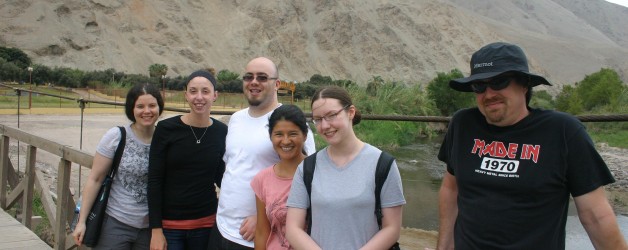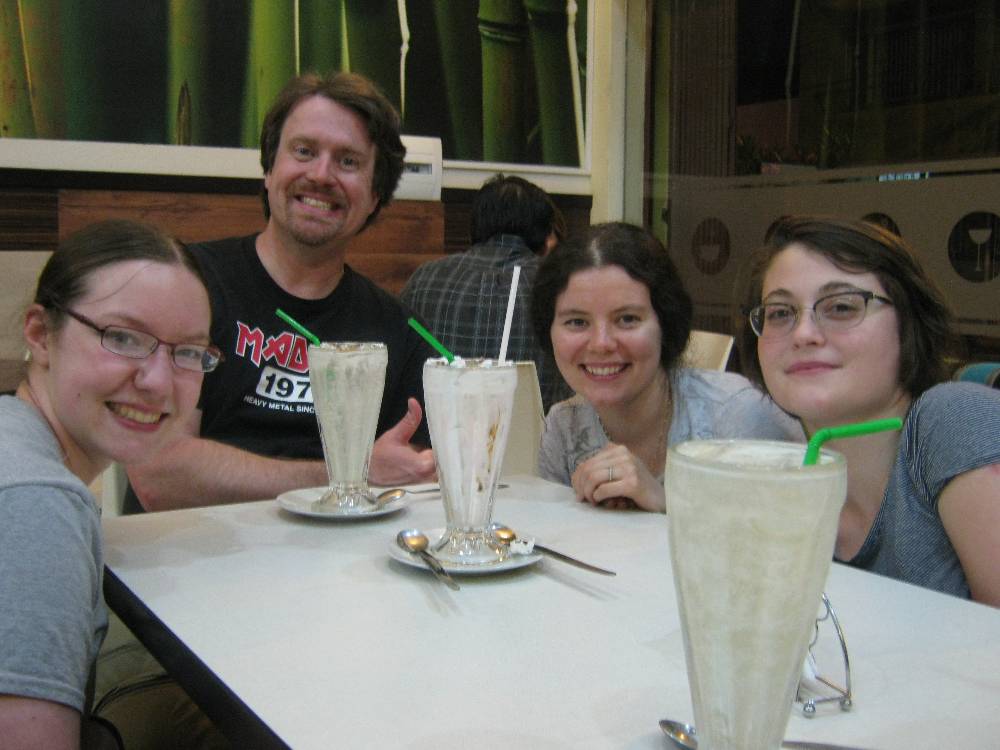
I had been lucky enough to not handle any skulls with the flesh still attached. Today, my luck ran out.
Dr. Barrett wanted to have pictures of the skull’s maxillary and mandibular arches. By the time I finished taking pictures of the skull, I had begun calling it names because the teeth kept falling out when I needed to take pictures of the dental arch.
After lunch, I peeked into the radiography group’s area where I saw a mummified dog sitting on a black cloth. If you are curious why the radiography group are taking pictures of mummified dogs, please see Ilo: Radiography.
I joined a few of the others who walked down to the river. Over the river is a bridge that provided relief against the bugs as they have been merciless against us. It was a nice break to get out of the center and not think about our work.
Right along the river is a variety of plant life while the sides of the valley are gray with rocks peppering the surface. Prehistoric people in the area terraced the surrounding valley to increase food production. While prehistoric people were able to survive, the stress that they were subjected to is marked on the bones by the fusion of the vertebra column from the heavy loads they carried as well as the data that can be collected from the teeth.
After our work finished at the center, we anthropology students and Dr. Barrett went out for milkshakes.

Here is Dr. Barrett and my classmates chilling after we finished delicious milkshakes after a long day of work at Centro Mallqui.
